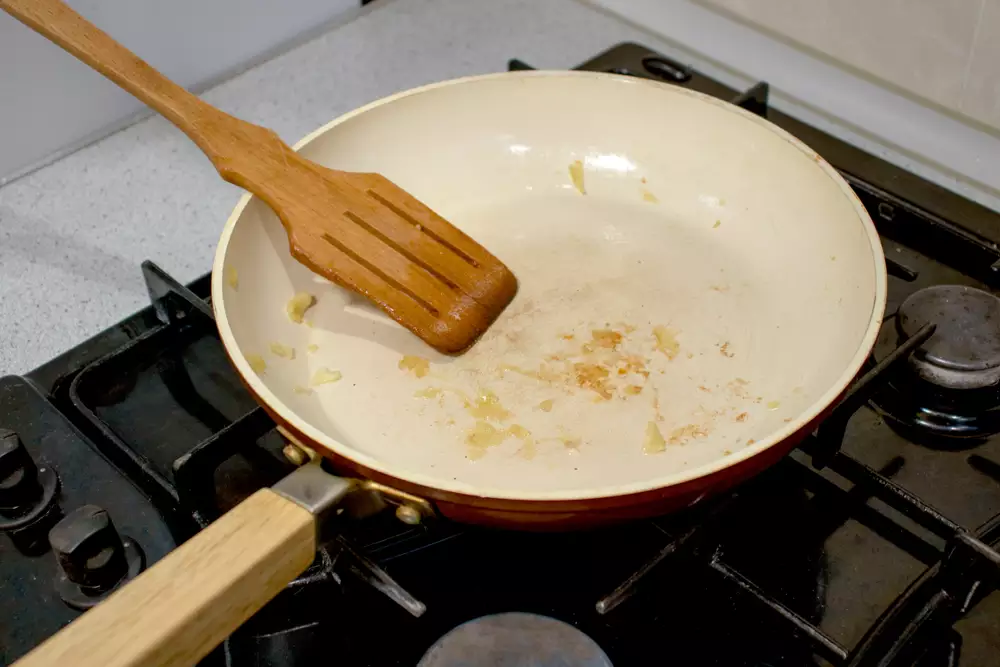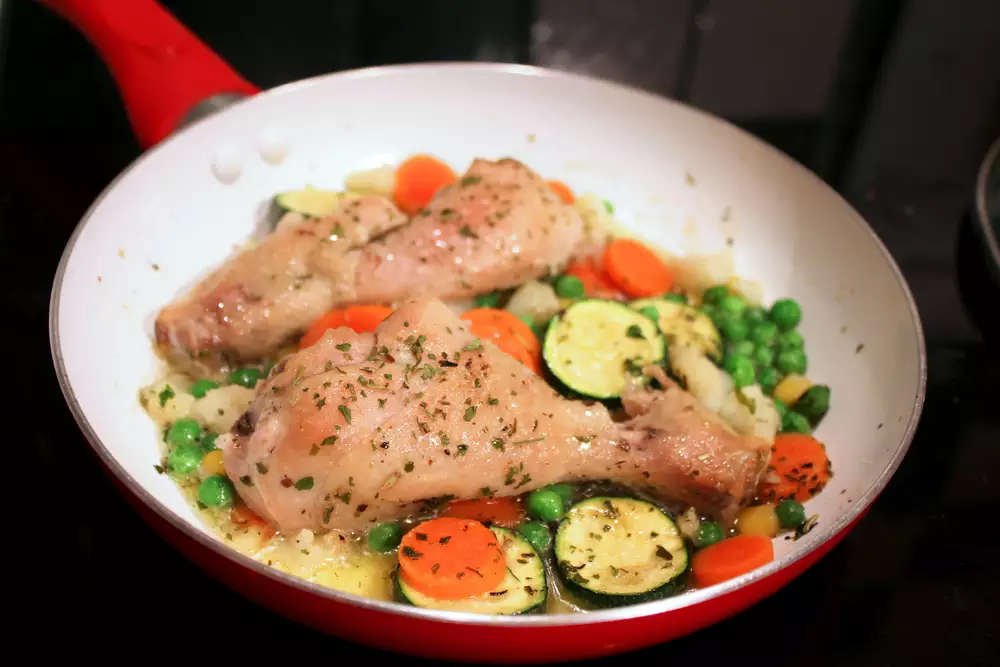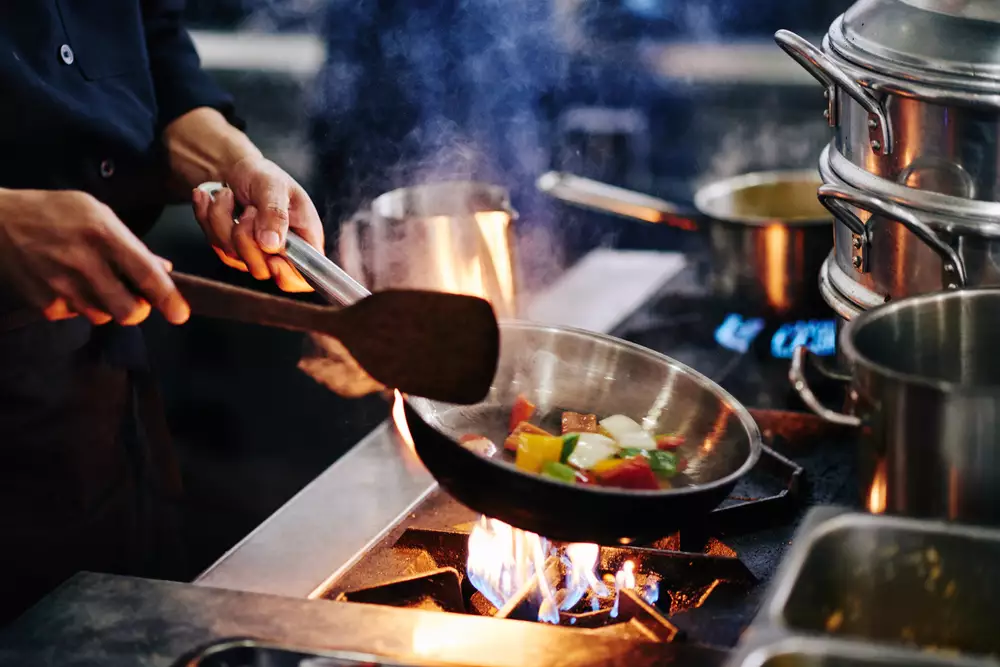You’ve probably been there, standing in your kitchen, with a brand-new shiny ceramic pan, wondering how to preserve its charm. The secret lies in one magical word – seasoning. While it might seem like a task only for professional chefs or cookware connoisseurs, I assure you that seasoning a ceramic pan is an easy process, beneficial for both the pan and your culinary ventures.
Seasoning is a simple process of treating the surface of your cookware with a slick layer of fat or oil. Not only does it offer your pan a non-stick surface but also acts as a protective layer, extending the pan’s lifespan. Especially for ceramic pans, seasoning is a key step to maintain their functionality and aesthetics.
Ceramic pans, despite their robust nature, benefit immensely from regular seasoning. The process enhances their durability, adds to their performance, and keeps them looking as good as new for longer. As someone who cooks regularly, knowing how to season your ceramic pan effectively can significantly upgrade your kitchen skills.
What is Seasoning?
Definition and Importance
Seasoning, contrary to popular belief, isn’t just a flavor enhancement technique. It’s a way of treating your cookware, particularly your ceramic pans, with a layer of oil to protect and maintain them. Seasoning provides a non-stick surface, promoting healthier cooking as it reduces the need for excessive oil.
Impact on Ceramic Pans
For ceramic pans, seasoning acts as a shield against wear and tear. It minimizes the chances of food sticking to the surface, which makes cooking and cleaning more manageable. A well-seasoned ceramic pan can be the star of your kitchen, both in terms of performance and longevity.

Ceramic Pans Basics
Understanding Ceramic Pans
Ceramic pans are a favorite among health-conscious cooks. With their toxin-free nature and heat retention capabilities, these pans make for a versatile and safe cooking option. Seasoning these pans isn’t just a suggestion; it’s a recommendation that can remarkably enhance your cooking experience.
Why Ceramic Pans Need Seasoning
Despite their non-stick claims, ceramic pans can lose their slickness over time. Regular seasoning can mitigate this problem, ensuring your pan remains as efficient as it was on day one. Seasoning also prevents possible surface damage, helping your pan withstand the test of time.
How to Season Ceramic Pans
Pre-seasoning Cleaning
Before you begin the seasoning process, ensure your ceramic pan is thoroughly clean. A mild detergent, warm water, and a non-abrasive sponge are all you need for this step. Make sure the pan is dry before moving on to the next step.
Choosing the Right Oil
The choice of oil is crucial for successful seasoning. While many oils work well, those with a high smoke point, like flaxseed or canola oil, are preferable. These oils form a tougher and more effective seasoning layer.
Process of Seasoning
- Pour a small amount of your chosen oil onto the pan. You can use a tablespoon as a guide for the quantity.
- Use a soft cloth or paper towel to spread the oil evenly over the interior surface of the pan. Ensure the layer is thin; an excessive amount of oil can result in a sticky surface.
- Pay extra attention to make sure the oil covers the surface uniformly. Remember to keep the layer of oil thin.
Baking the Pan
- Preheat your oven to around 350 degrees Fahrenheit.
- Place the oiled pan upside down in the oven. The upside-down positioning prevents any excess oil from pooling in the pan.
- Allow the pan to bake for about an hour.
- After the baking time, turn off the oven and let the pan cool naturally inside.

Seasoning Tips for Ceramic Pans
Ideal Temperature for Seasoning
Seasoning is a bit like Goldilocks’s story. The temperature can’t be too low or too high; it needs to be just right. And that “just right” temperature is around 350 degrees Fahrenheit.
This level of heat is high enough to allow the oil to bond with the ceramic surface effectively, but it’s not so high that it could risk damaging your pan or reaching the oil’s smoke point prematurely. Maintaining the right temperature ensures that the oil can fully polymerize, i.e., transform into that protective layer we’re seeking.
Suitable Oils for Seasoning
The choice of oil can significantly influence your seasoning results. Different oils have different smoke points, and for seasoning, oils with a high smoke point work best. Smoke point refers to the temperature at which oil starts to break down and smoke.
High smoke point oils can withstand the seasoning temperature without breaking down, which allows them to form a stronger, more durable seasoning layer. Flaxseed oil and canola oil are popular choices due to their high smoke points.
Grapeseed oil and sunflower oil are also suitable. Coconut oil can be an alternative; however, its lower smoke point makes it slightly less effective for seasoning.
Time Required for Optimal Seasoning
The time you allow your pan to bake in the oven also contributes to the effectiveness of the seasoning. A general guideline is to bake the pan for about an hour. This duration typically provides enough time for the oil to polymerize and form a robust non-stick layer on the pan’s surface.
But remember, after turning off the oven, don’t rush to take out the pan. Let it cool down naturally inside the oven. This slow cooling down period is also part of the seasoning process, and it helps to finalize and solidify the protective layer.

Re-Seasoning Ceramic Pans
When to Re-season
You might be wondering, how often should I season my ceramic pans? Well, it depends on how frequently you use your pans and the kind of cooking you do. If you notice food starting to stick to the pan’s surface or if the surface looks patchy or dull, it’s a sign that your pan may need re-seasoning.
Regular seasoning is the key to maintaining your ceramic pans in their optimal state, and I’d recommend re-seasoning your pans every few months, or as needed, based on your usage.
Steps for Successful Re-seasoning
Re-seasoning follows the same steps as the initial seasoning. Clean the pan thoroughly, apply a thin layer of oil, and bake it in the oven. However, before re-seasoning, make sure to clean your pan really well to remove any remnants of the old seasoning layer. You want a clean canvas for the new layer of seasoning.
Common Mistakes While Seasoning
Avoidable Errors in Seasoning Process
Seasoning a ceramic pan isn’t complicated, but there are some common mistakes to watch out for. One such mistake is using too much oil. Remember, a thin layer is what we need for the ideal seasoning. Another error is not preheating the oven or using an incorrect temperature.
As I mentioned earlier, around 350 degrees Fahrenheit is the sweet spot for most oils. Lastly, skipping the cooling period in the oven is a mistake you don’t want to make. Patience is a virtue, especially when it comes to seasoning ceramic pans.
How to Correct Seasoning Mistakes
If you’ve made any of these mistakes, don’t fret. Most seasoning errors can be corrected. If your pan has a sticky surface, it’s likely due to excess oil.
In this case, clean the pan thoroughly and repeat the seasoning process with less oil. If you suspect the oven temperature was off, simply re-season the pan, ensuring to preheat the oven correctly this time.

Maintaining a Seasoned Ceramic Pan
Post-seasoning Cleaning
After seasoning your ceramic pan, remember to clean it gently after every use. Avoid harsh detergents and abrasive sponges that can potentially damage the seasoning. Warm water and a soft sponge should do the trick. Occasionally, you can use a bit of mild soap, but avoid making it a habit.
Tips for Long-lasting Seasoning
To maintain the seasoning for longer, use wooden or silicone utensils instead of metal ones to prevent scratches on the seasoned surface. Also, avoid cooking at extremely high temperatures as it can cause the seasoning to wear off faster.
Storage Suggestions
When it comes to storing your seasoned ceramic pan, ensure it’s completely dry before you put it away. Storing the pan when it’s slightly wet can lead to rust or damage the seasoning layer. If you stack your pans, consider using pan protectors to prevent scratches on the seasoned surface.
FAQs
How often should I season my ceramic pan?
Generally, re-seasoning every few months is advisable. However, this depends on how frequently you use your pan. If you notice food starting to stick or the pan surface turning dull or patchy, it’s time to re-season.
Can I season my ceramic pan on the stovetop instead of the oven?
While the oven method is the most recommended for seasoning ceramic pans, stovetop seasoning is also possible. However, it requires careful monitoring of temperature and might not provide as durable a seasoning layer as the oven method.
What if my seasoned ceramic pan still sticks?
If food still sticks to your seasoned ceramic pan, it might be due to an improperly seasoned surface, high cooking temperatures, or use of metal utensils causing scratches. Consider re-seasoning your pan
Can I use any oil for seasoning my ceramic pan?
While technically, any oil can be used for seasoning, those with a high smoke point, like flaxseed or canola oil, are recommended. These oils can withstand the high temperature of seasoning without breaking down, allowing them to form a robust non-stick layer.
Conclusion
Seasoning a ceramic pan, when done correctly, can significantly enhance your cooking experience. The process, although seemingly daunting, is simple and straightforward. All it requires is a bit of time, the right oil, and a dash of patience. The result is a ceramic pan with improved non-stick functionality and extended lifespan.
Remember, the key to successful seasoning lies in the minute details: cleaning the pan thoroughly, applying a thin, even layer of high smoke point oil, and baking the pan at the right temperature. But, it’s not just about seasoning once; regular re-seasoning is necessary to maintain the pan’s performance over time.
Admittedly, there’s a learning curve involved, but once you’ve mastered the technique, you’ll notice the difference in your cooking and your ceramic pan’s longevity. Seasoning your ceramic pan isn’t just an optional step, but a practice that paves the way for healthier, happier cooking.
